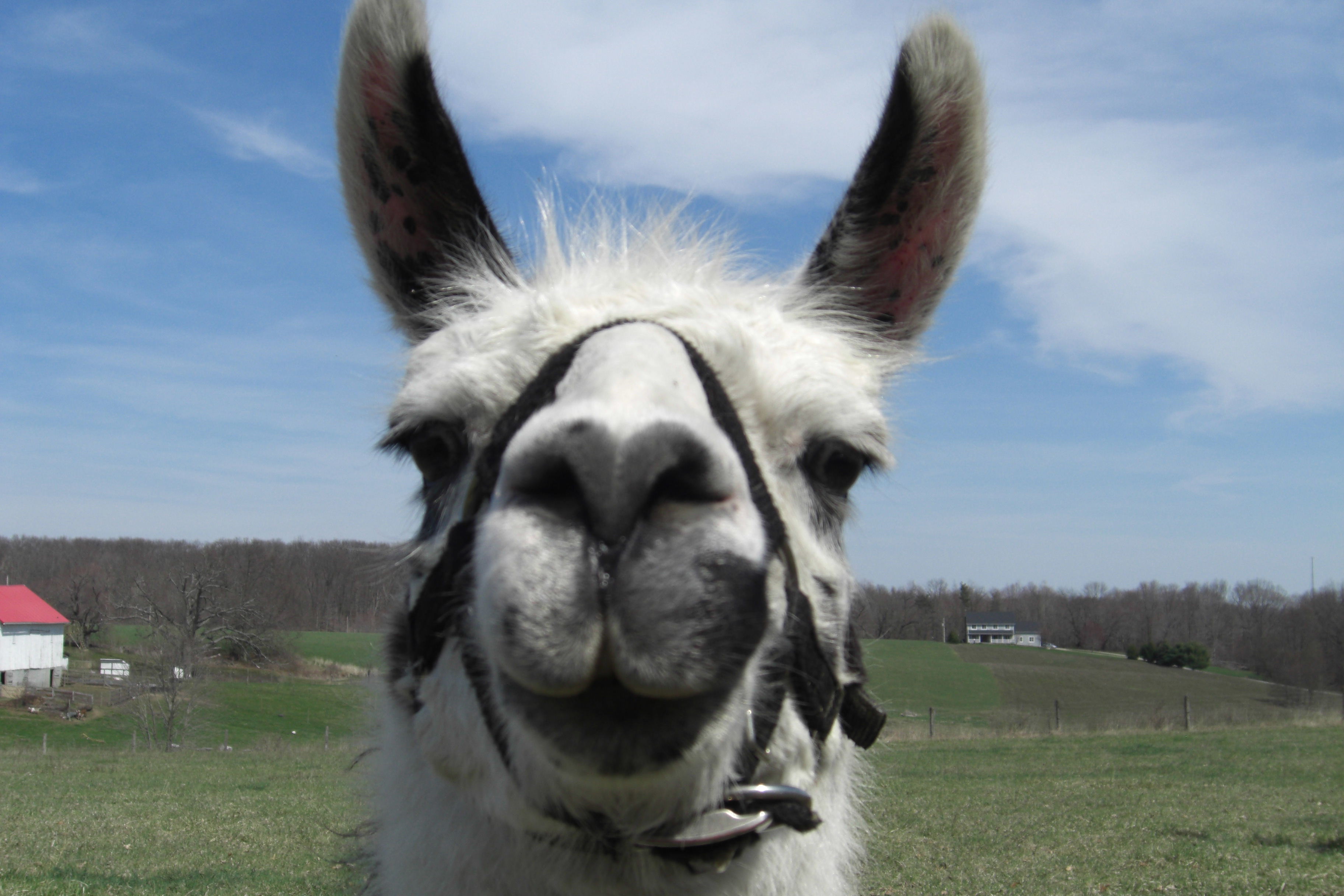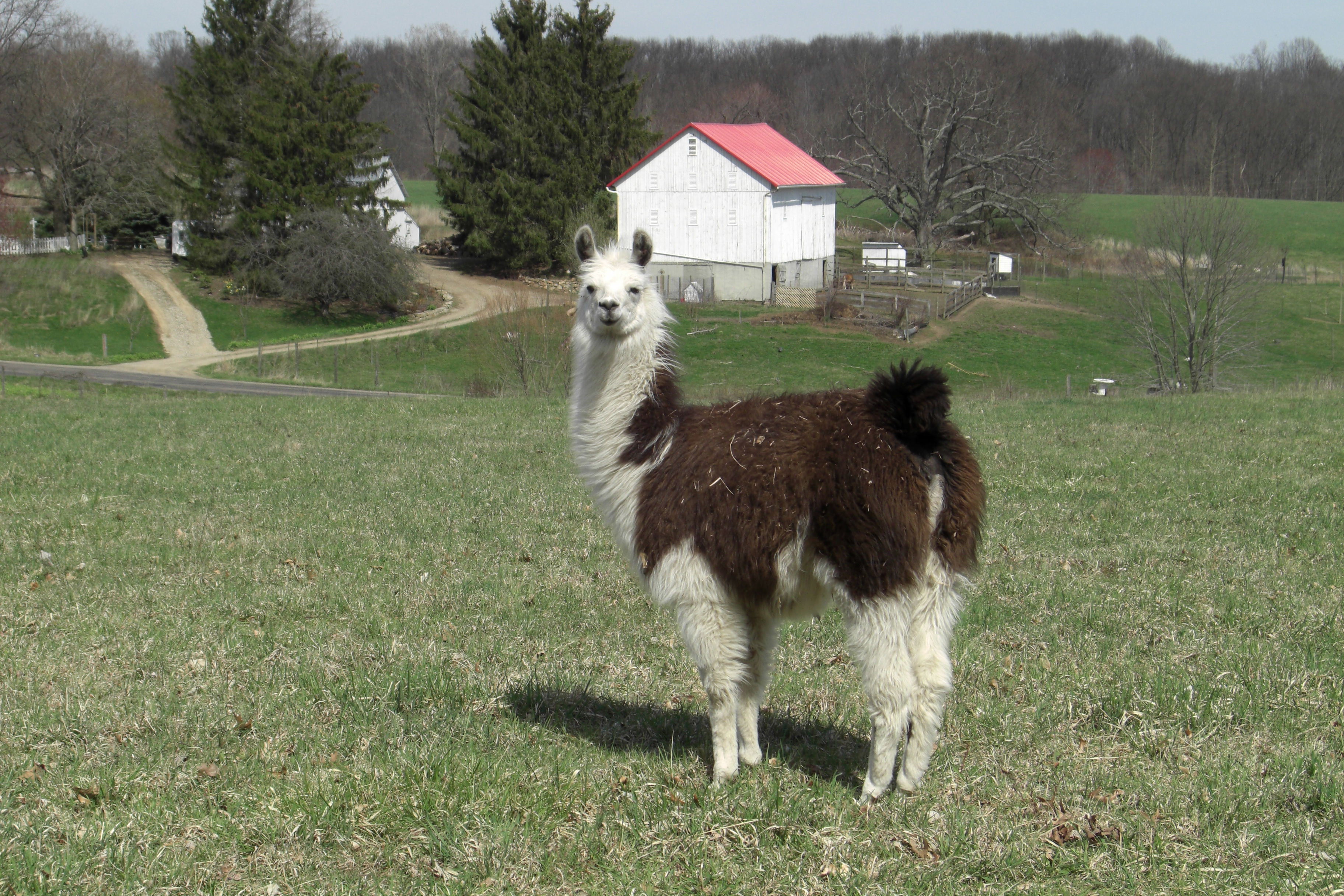While visiting my Darling Daughter at her college in the cornfields of Ohio, I was delighted and intrigued by three llamas wandering about in a field we drove past. I stopped to say hello and got greeted with much interest by the Head Llama (below) who found my camera irresistible.

As I communed with the Head Llama I began to wonder what exactly one keeps a llama around for. So when I got to a computer I asked the internet. Here’s what I found:
Llamas are camelids, along with the alpaca, the guanaco, and the vicuna. They’re thought to be related to the Bactrian and Dromedary camels of Asia. Baby llamas are called “crias’.

They make excellent pets and companions because of their “low-key temperament, intelligence and ease of maintenance.” The latter assumes you have large fields around your house; I don’t think it would so easy to maintain one in suburban New Jersey. They make wonderful hiking and jogging companions (I’m not joking–I got this information from a llama website).
Llamas are terrific pack animals because of their “thriftiness” which I think goes back to the low-maintenance thing. Evidently they are in demand for wilderness packing in the mountainous regions of the western United States. You can also hitch your llama to a cart and ride around in it.
Their wool is very nice although not used for mass production. They have been known to keep predators away from flocks of sheep. Llamas can also be eaten although that seems sort of creepy if they are your jogging companions and the guardians of your sheep.

I guess the main reason to keep them around is that they’re downright cute, or, as one website crowed, “Llamas make you happy!”

Yikes! Don’t eat the jogging companions!